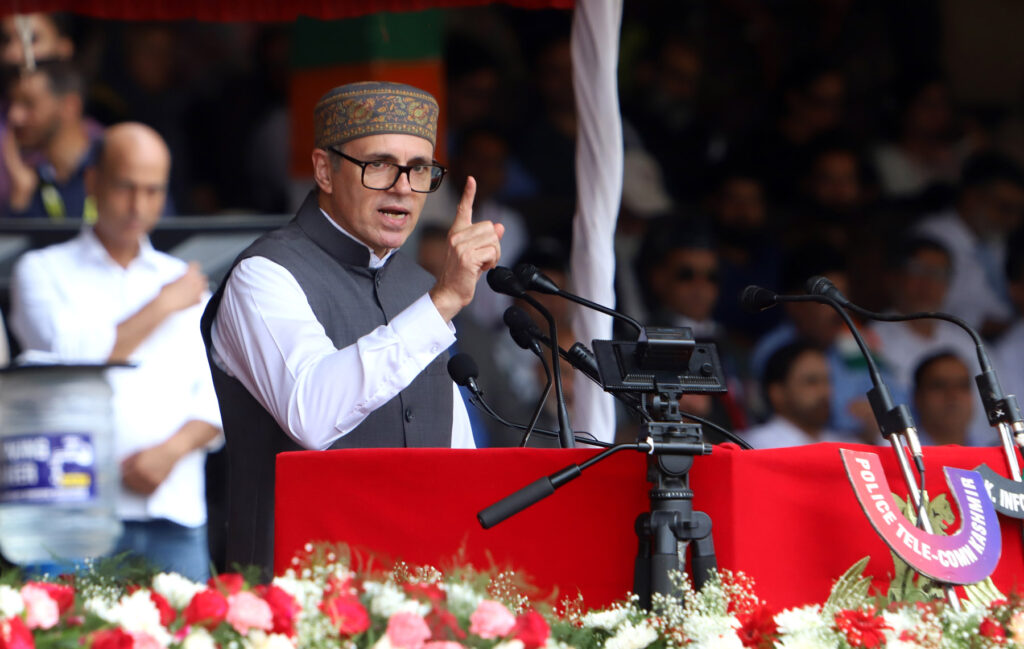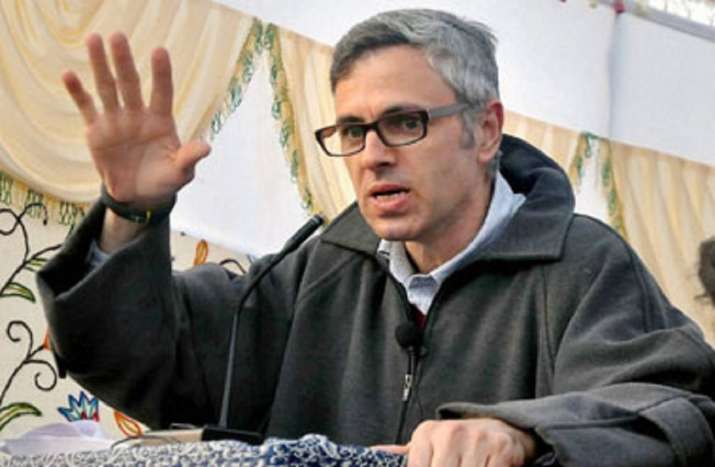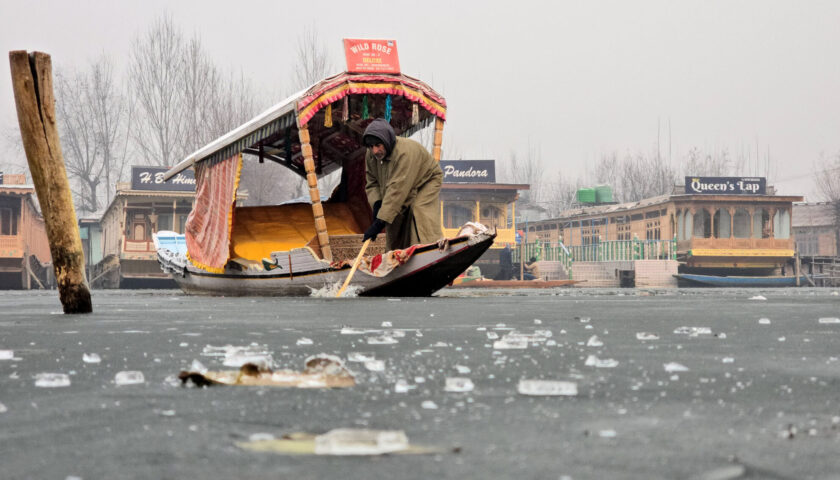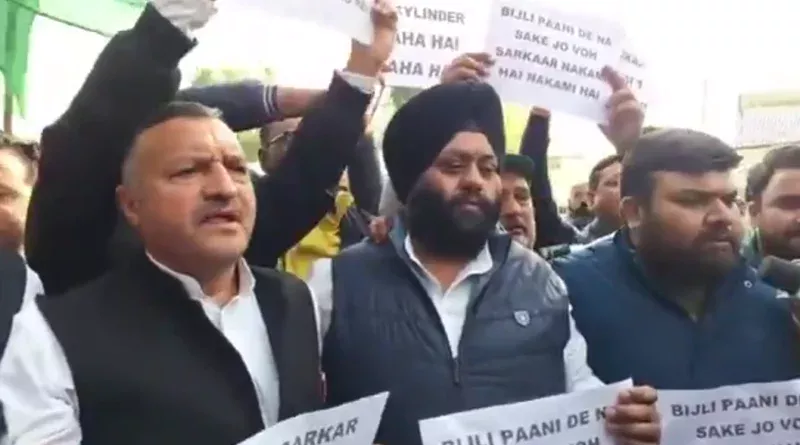Why the New Campaign Has Stirred More Questions Than Answers in Jammu & Kashmir
By: Javid Amin | Srinagar | 16 Aug 2025
The Promise and the Protest
“We will launch a massive signature campaign across Jammu & Kashmir. Over the next eight weeks, we will reach all 90 Assembly Constituencies, gathering signatures in support of restoring J&K’s statehood,” announced Honourable CM Omar Abdullah, standing before party leaders, legislators, and a charged crowd of supporters.
It was meant to sound like a battle cry—a show of defiance, a mobilization of democratic will, and a reminder that the National Conference (NC) government would not rest until statehood was restored.
But instead of applause from every corner, the announcement triggered a wave of criticism, skepticism, and even mockery. For many, this campaign raised a troubling question: Why does an elected government, with constitutional powers and a clear electoral mandate, need to behave like a pressure group or civil society NGO?
The Context: Statehood and the Political Soul of J&K
Since the abrogation of Article 370 and bifurcation of Jammu & Kashmir in August 2019, the state lost not only its special constitutional status but also its statehood itself, being downgraded to a Union Territory (UT) under central control.
For the people of J&K, statehood is not just an administrative label—it is about dignity, political identity, and self-rule. It represents the minimum restoration of what was taken away six years ago.
The Centre has repeatedly promised that statehood will be restored “at an appropriate time,” but that “time” has been endlessly delayed. Every political party in J&K, from the NC to PDP to Apni Party, has made statehood their central demand.
The 2024 Assembly election was fought—and won—largely on this plank. The NC’s victory was seen as a clear public verdict: restore our statehood.
Omar Abdullah’s Move: A “Signature Campaign” Across 90 Constituencies
Omar Abdullah’s announcement came with grand ambition:
-
All 90 Assembly constituencies will be covered.
-
The campaign will run for 8 weeks, creating visible momentum.
-
The collected signatures will be framed as a moral and political mandate for statehood.
It is designed as a people’s movement, but critics ask: Is it the people who need to prove their demand again—or the government that needs to act?
Public Reaction: “We Already Signed With Our Vote”
Perhaps the sharpest public response was this:
“No signature campaign can speak louder than the Assembly election of 2024 and the clear mandate that the National Conference received after promising to fight for the political rights of the people of Jammu and Kashmir.”
For ordinary citizens, this campaign feels like repetition of the obvious. Statehood is already a universal demand—do signatures add anything new?
Critics argue: if the NC really wants to run a signature campaign, it should run it inside the Indian Parliament—collecting the support of MPs across parties, attaching a formal memorandum to the President of India and the Chief Justice of India, demanding constitutional restoration.
The Charge of Hypocrisy: Omar Abdullah’s Earlier Stand
The criticism is made sharper by Omar Abdullah’s own political record.
Activists recall that when 6,000+ signatures were once presented to him on the issue of reservation rationalisation, he rejected them, saying “signatures have no legal binding, things don’t work like that.”
Yet today, Omar Abdullah is championing the very tool he once dismissed. To many, this is political hypocrisy at its peak—proof that the NC government is dodging concrete action and resorting to symbolic distractions.
Signature Campaigns: Civil Society vs. State Power
There is also a theoretical and political distinction here:
-
Signature campaigns are tools of the powerless—civil society groups, NGOs, student bodies—who lack political authority.
-
Their purpose is to educate, mobilize, and pressure elected governments.
But when an elected government itself launches a signature drive, the meaning flips upside down. Instead of leading with executive and legislative action, it is outsourcing responsibility back to the people.
As one political science student put it:
“The people already did their duty—they voted. Now the government must do its duty. You cannot make the victims of disempowerment carry the burden of proving themselves again.”
The Political Psychology: Why Omar Abdullah Chose This Path
Why would Omar Abdullah, an experienced politician, choose such a symbolic tactic? Analysts point to several possible motives:
-
Avoiding Confrontation With Delhi
-
By running a symbolic campaign instead of passing a formal Assembly Resolution or leading a constitutional challenge, Omar avoids direct clash with the Centre.
-
-
Buying Time
-
With statehood not immediately forthcoming, the NC needs to show activity, keep people engaged, and avoid appearing passive. A signature campaign creates the appearance of action.
-
-
Shifting Responsibility
-
The campaign subtly shifts the onus back onto the people: “Look, we are fighting, but Delhi is not listening.”
-
-
Reclaiming Street Politics
-
Omar is trying to blend government authority with movement-style politics, projecting himself as both chief minister and movement leader.
-
The Dangers of Symbolism Over Substance
Critics warn that such moves can be counterproductive:
-
Disillusionment: People may see it as tokenism, deepening distrust in mainstream politics.
-
Evasion of accountability: Instead of being answerable for promises, leaders hide behind symbolic gestures.
-
Weakening institutions: By bypassing legislative tools (like Assembly resolutions), governments reinforce the perception that even elected representatives are powerless.
The Historical Lesson: How Statehood Battles Were Fought Elsewhere
Looking at Indian history, statehood or autonomy movements have succeeded not through signature drives, but through:
-
Legislative resolutions (e.g., Telangana, Uttarakhand, Jharkhand).
-
Strong political bargaining in Parliament.
-
Mass movements led by civil society, but supported by strong legislative action.
Omar’s critics argue that J&K already crossed the stage of symbolic movements—now it requires hard negotiation with Delhi.
The Social Angle: Vulnerable People as Political Shields
One of the sharpest criticisms is that such campaigns exploit ordinary citizens. People in J&K have already borne the cost of political upheavals, violence, and disempowerment.
They voted in the 2024 Assembly election, despite cynicism and fear. By doing so, they delivered a clear verdict. To make them now stand in queues again to “sign” for their rights is seen as burdening the victim twice.
As one critic put it:
“The munsif (judge) we were looking at for justice has become muddai (petitioner) now—to kill time and fool people.”
Bottom-Line: Symbol or Substance?
Omar Abdullah’s Statehood Signature Campaign may be remembered as either a clever political manoeuvre or a shallow distraction.
-
If it builds real momentum and translates into institutional action—Assembly resolutions, parliamentary lobbying, legal petitions—it could strengthen the demand.
-
If it remains just a symbolic “movement” led by those already in power, it risks becoming a circus of hypocrisy, confirming the worst fears of a people already exhausted by broken promises.
The people of Jammu & Kashmir have already signed once—with their vote. Now, they wait to see whether their chief minister will honour that mandate with action, not just petitions.




